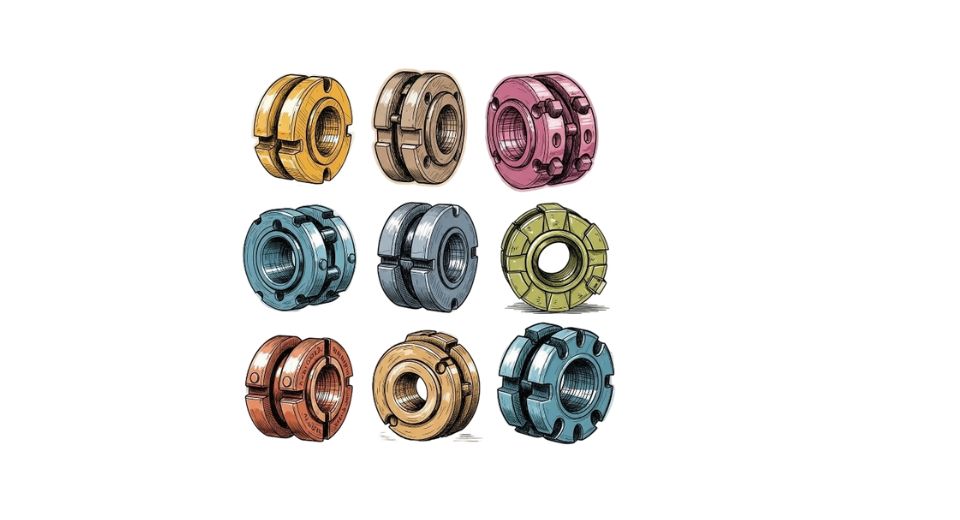
Jul 09, 2025

The recently published research report edited by Metastat Insight on the Global Couplings Market provides a thorough insight into this industrial segment that is constantly changing under the pressures of several forces. This well-defined study sheds light upon the dynamics of coupling technologies and their occurrence over different industrial applications. What emerges from this exploration is not merely a snapshot, but a layered narrative that unpacks the motivations, transitions, and expectations embedded within the coupling industry on a global scale. Couplings, by their fundamental design, serve to connect rotating shafts and ensure power transmission between two components.
While their structure may seem relatively straightforward, their significance in the mechanics of countless machines reveals a deeper layer of operational necessity. As industries develop their production methods, energy consumption, and efficiency of systems, the need for precision-engineered coupling solutions has unobtrusively grown greater. It is not a result of trend factors manifesting on the surface, but the culmination of gradual change in engineering ideologies and operational priorities in manufacturing industries. The Global Couplings Market is, in large part, an echo of industrial discipline colliding with flexibility. Manufacturers are not just making in order to fill quantity requirements; they are working with the necessity of customization, strength, and decreased maintenance cycles.
In industries like automotive, aerospace, and manufacturing, the requirement for couplings that minimize vibration, tolerate misalignments, and support high torque loads is driving design and development strategy. These demands are compelling businesses to break new ground in innovation that extends beyond conventional mechanical design. Material science, software integration, and smart component technology are starting to leave their mark on what was previously a purely mechanical component. One of the more understated but important developments in this space has been the interplay between regional manufacturing traditions and global supply networks. As various countries become hubbed for particular industry sectors, the need for customized coupling solutions has increased. This need not only calls upon suppliers to deliver dimensional and load specifications but also encourages them to take into account environmental factors, operational cycles, and compliance regulations unique to each territory.
As a result, the Global Couplings Market is not only reacting to mechanical needs, but to regulatory, cultural, and logistic factors that redefine its course. It is also interesting to observe the shift in procurement strategies among industries. Customers nowadays are less interested in catalog buying and more interested in collaborative development. This has transformed coupling providers into partners in engineering and not mere product suppliers. The dynamic comes with longer development times, more exhaustive testing periods, and the possibility of shared intellectual property.
Adaptability and transparency of technology have become nearly as critical as product robustness or endurance in this climate. Vendors are putting more money into their consultative skills, adding a layer of service parallel to product supply. Technologically, the use of simulation and predictive modeling has also started to have an impact on how couplings are designed and chosen. Computer-aided design software is no longer used only for geometry optimization but also for fatigue analysis and forecasting performance. These computer-based abilities enable improved expectation of patterns of wear and points of failure, thus limiting the trial-and-error cycle conventionally linked with mechanical parts selection. The Global Couplings Market is therefore increasingly incorporating computer efficiencies into its process, enabling end users to plan more confidently and securely. Behind all this advancement is the imperative of remaining cost-effective.
Regardless of how revolutionary the solution might be, it is ultimately defined by whether the people can access the supplies in that market. Suppliers in this market must therefore walk a tightrope: innovate within the bounds of cost sensitivity. This often means leaning into lean manufacturing, sustainable sourcing, and modularity in design. These strategies help contain costs while delivering solutions that do not sacrifice reliability. It is in this balancing act that many of the most competitive players are distinguishing themselves.
Supply chain management, also, is quietly being redirected. Global events have demonstrated the dangers of excessive reliance on a single route or area. Accordingly, Global Couplings Market companies are quietly building resiliency into their operations by way of localized nodes of production, multi-region sourcing, and information tracking systems offering improved visibility and responsiveness. Although this change has yet to be obvious, its effects already are reshaping procurement, inventory management, and service logistics.
The research published by Metastat Insight confirms again how the Global Couplings Market is not fixed but constantly reconfigured through a matrix of engineering complexities, geographical variations, and technology-driven improvements. Every innovation has its own tale of adaptation, learning, and advancement. There is no single way in which the market is trending, but a convergence of forces, each drawing the industry into new modes of relevance and usage. The growing interdependence between product innovation and application demands serves as a quiet but steady undercurrent moving this sector forward. As this in-depth overview by Metastat Insight suggests, it is clear that the Global Couplings Market does not exist as a solo mechanical sector but as a crossroads of expertise, precision, and conformity. Its development mirrors the overall story of contemporary industry nondescript, intentional, and ever-striving to achieve improved solutions to evolving technical demands.
Drop us an email at:
Call us on:
+1 214 613 5758
+91 73850 57479